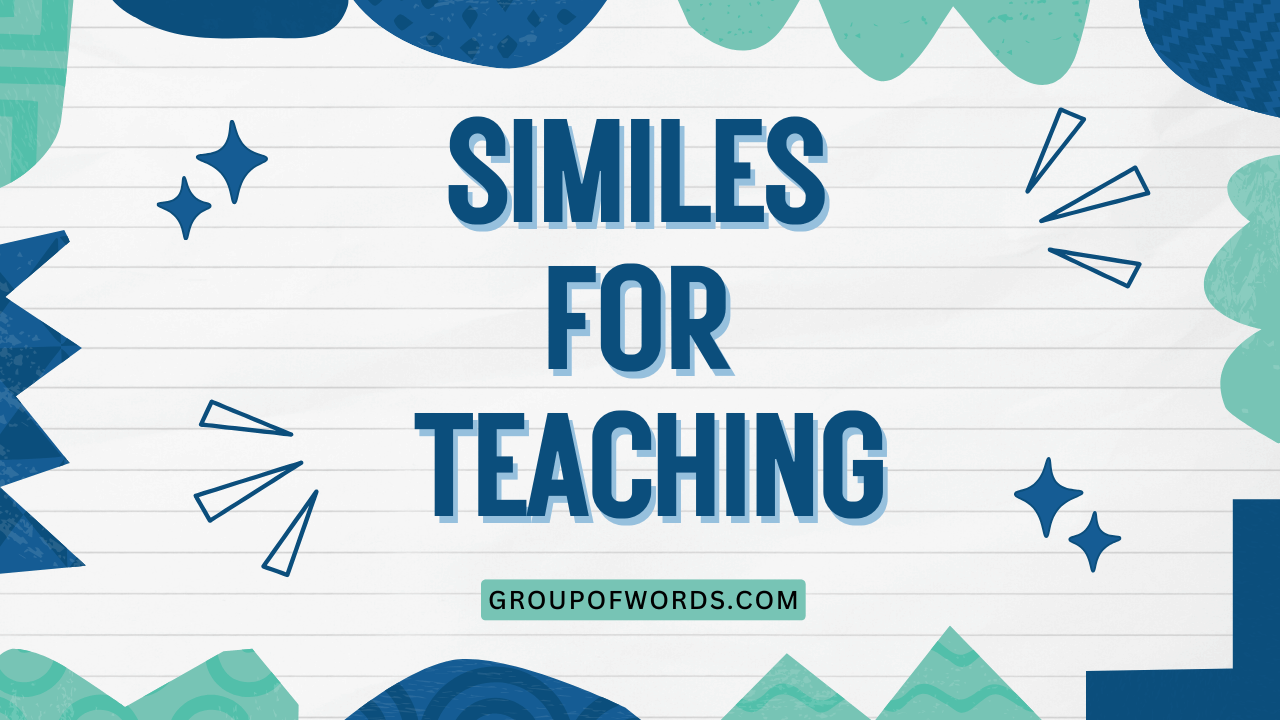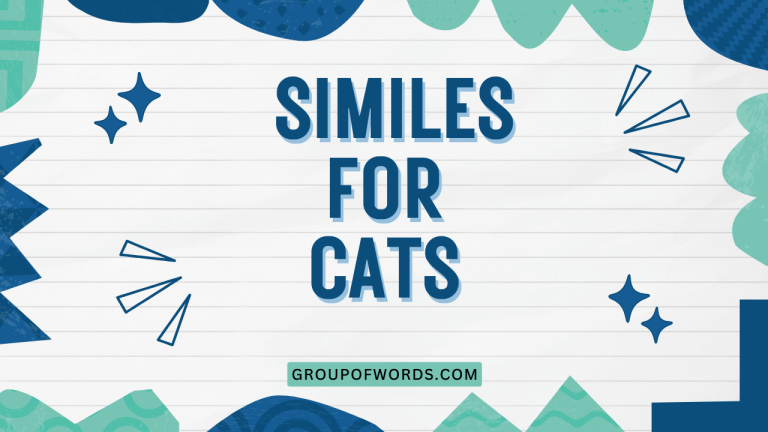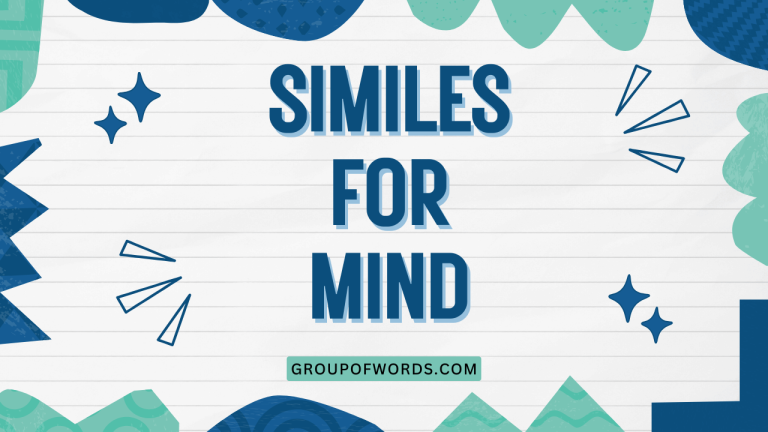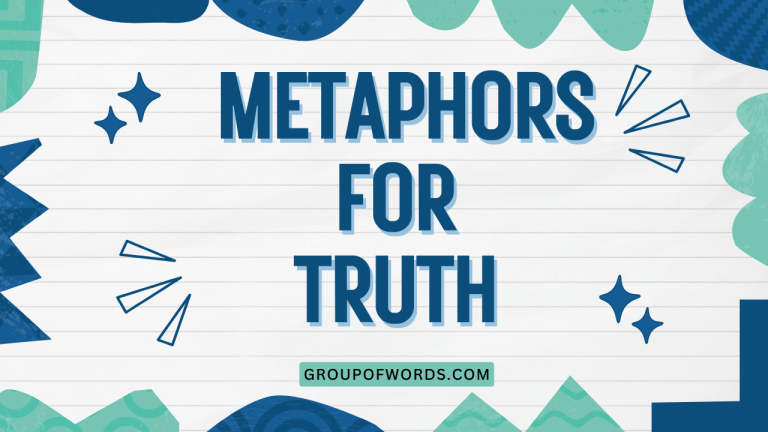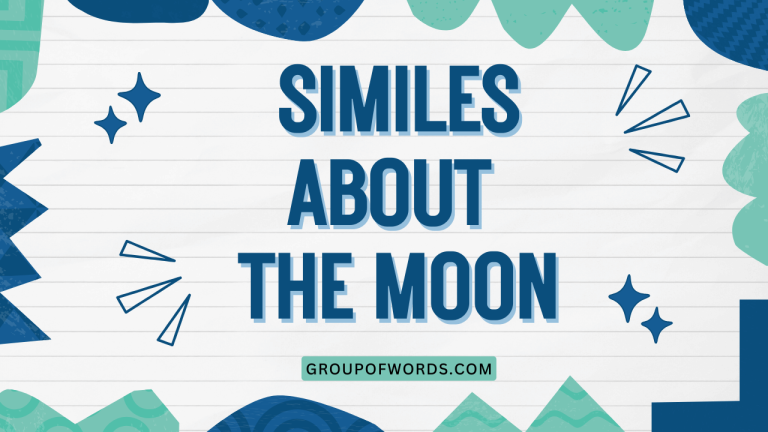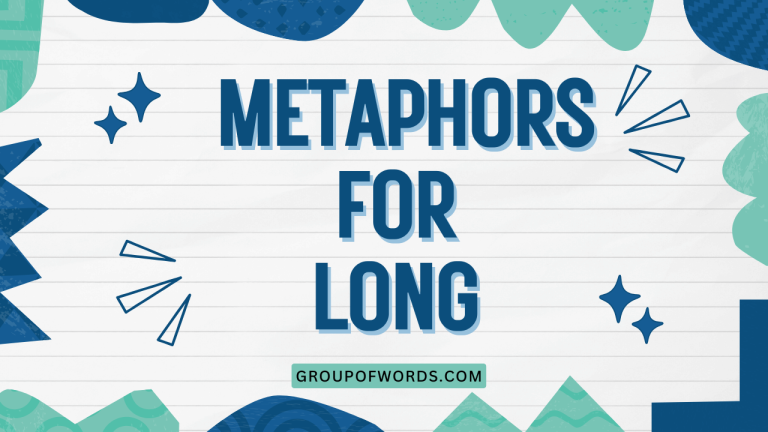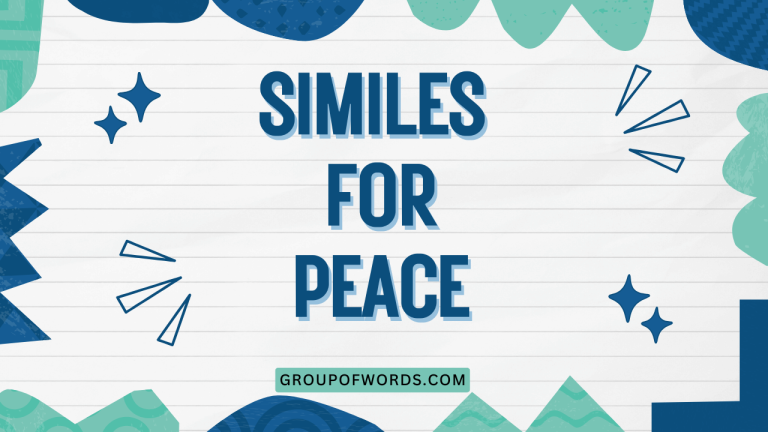Similes: A Comprehensive Guide for English Learners
Similes are powerful figures of speech that enhance our writing and speech by making comparisons between two unlike things using the words “like” or “as.” Understanding similes is crucial for English learners as they add color, depth, and clarity to communication. This guide provides a comprehensive exploration of similes, covering their definition, structure, types, usage, common mistakes, and practice exercises.
Whether you’re a beginner or an advanced learner, this article will equip you with the knowledge and skills to effectively use similes in your English.
Table of Contents
- Definition of Similes
- Structural Breakdown of Similes
- Types of Similes
- Examples of Similes
- Usage Rules for Similes
- Common Mistakes with Similes
- Practice Exercises
- Advanced Topics in Similes
- Frequently Asked Questions (FAQ)
- Conclusion
Definition of Similes
A simile is a figure of speech that directly compares two different things, highlighting a similarity between them. The comparison is made explicit through the use of words such as “like” or “as.” Similes are used to make descriptions more vivid, relatable, and engaging. They help the reader or listener create a mental image and understand the quality being described more effectively. Essentially, a simile draws a parallel between something familiar and something less known, making the latter more accessible.
Unlike metaphors, which imply a direct equivalence (e.g., “He is a lion”), similes acknowledge that the two things being compared are distinct entities. The function of a simile is to illustrate a specific characteristic or attribute that the two share.
Similes are commonly found in literature, poetry, everyday speech, and advertising, demonstrating their versatility and widespread use in various contexts.
Structural Breakdown of Similes
The basic structure of a simile consists of three main components: the subject, the linking word (either “like” or “as”), and the object of comparison. The subject is the thing being described, and the object of comparison is the thing it is being compared to. The linking word establishes the connection between the two, indicating that they share a particular quality.
A typical simile follows this pattern: Subject + Linking Word + Object of Comparison. For example, in the simile “The snow was as white as a sheet,” “the snow” is the subject, “as” is the linking word, and “a sheet” is the object of comparison. This structure allows for a clear and concise comparison that enhances the descriptive power of the sentence. The effectiveness of a simile often depends on the aptness of the comparison – the more relevant and insightful the connection, the more impactful the simile will be.
Let’s break down the structural elements with more examples:
- Subject: The person or thing being described.
- Linking Word: “Like” or “as.”
- Object of Comparison: The person or thing the subject is being compared to.
Consider these examples:
- “She sings like an angel.” (Subject: She; Linking Word: like; Object of Comparison: an angel)
- “He is as brave as a lion.” (Subject: He; Linking Word: as; Object of Comparison: a lion)
- “The car was moving like a snail.” (Subject: The car; Linking Word: like; Object of Comparison: a snail)
Types of Similes
Similes can be categorized based on the nature of the comparison they make. Understanding these different types can help you use similes more effectively and creatively.
Positive Similes
Positive similes are used to emphasize a positive attribute or quality of the subject. They compare the subject to something that is generally considered desirable or advantageous.
These similes often evoke feelings of admiration, approval, or appreciation.
Negative Similes
Negative similes highlight a negative attribute or quality of the subject. They compare the subject to something that is generally considered undesirable or unfavorable.
These similes can convey feelings of disapproval, dislike, or criticism.
Descriptive Similes
Descriptive similes are used to provide a more detailed and vivid description of the subject. They compare the subject to something that helps the reader or listener visualize its appearance, sound, smell, or other sensory qualities.
These similes are often used to create a stronger impression or evoke a particular mood.
Exaggerated Similes
Exaggerated similes, also known as hyperbole, are used to emphasize a particular quality or characteristic by comparing the subject to something in an exaggerated or unrealistic way. These similes are often used for humorous effect or to create a sense of drama.
Examples of Similes
The following sections provide a comprehensive list of simile examples, categorized by type, to illustrate their diverse applications and enhance your understanding.
General Similes
This table presents a variety of general similes that cover a wide range of comparisons. These examples demonstrate how similes can be used to describe different subjects and qualities.
| Simile | Explanation |
|---|---|
| As busy as a bee | Describes someone who is very active and hardworking. |
| As quiet as a mouse | Describes someone or something that is very silent. |
| As brave as a lion | Describes someone who is courageous and fearless. |
| As strong as an ox | Describes someone who is very powerful and robust. |
| As light as a feather | Describes something that is very weightless. |
| As cold as ice | Describes something that is very frigid or someone who is unemotional. |
| As clear as crystal | Describes something that is very transparent or easily understood. |
| As dark as night | Describes something that is very shadowy or obscure. |
| As dry as a bone | Describes something that is very arid or parched. |
| As easy as pie | Describes something that is very simple or effortless. |
| As fast as lightning | Describes something that is very rapid or swift. |
| As gentle as a lamb | Describes someone who is very mild and tender. |
| As hungry as a wolf | Describes someone who is very ravenous or famished. |
| As innocent as a dove | Describes someone who is very pure and guileless. |
| As jolly as Santa Claus | Describes someone who is very cheerful and festive. |
| As keen as mustard | Describes someone who is very enthusiastic and eager. |
| As large as an elephant | Describes something that is very sizable or immense. |
| As mad as a hatter | Describes someone who is very eccentric or insane. |
| As neat as a pin | Describes something that is very tidy and orderly. |
| As old as the hills | Describes something that is very ancient or venerable. |
| As patient as a saint | Describes someone who is very tolerant and forbearing. |
| As quick as a bunny | Describes someone who is very agile and nimble. |
| As red as a rose | Describes something that is very crimson or florid. |
| As slippery as an eel | Describes someone who is very evasive and elusive. |
| As sweet as honey | Describes something that is very sugary or delightful. |
| As tough as nails | Describes someone who is very resilient and unyielding. |
| As ugly as sin | Describes something that is very unattractive or hideous. |
| As valuable as gold | Describes something that is very precious and prized. |
| As wise as an owl | Describes someone who is very sagacious and knowledgeable. |
| As young as springtime | Describes someone who is very youthful and fresh. |
Positive Similes Examples
This table showcases similes that highlight positive qualities and characteristics. They are designed to evoke feelings of admiration and approval, adding a positive tone to descriptions.
| Simile | Explanation |
|---|---|
| As beautiful as a sunrise | Describes something with stunning and radiant beauty. |
| As bright as a star | Describes someone or something that is radiant and intelligent. |
| As charming as a prince | Describes someone with great appeal and charisma. |
| As cheerful as a lark | Describes someone who is very happy and optimistic. |
| As clean as a whistle | Describes something that is spotless and pure. |
| As comforting as a warm fire | Describes something that provides solace and warmth. |
| As delightful as a dream | Describes something that is very pleasurable and enjoyable. |
| As elegant as a swan | Describes someone or something with refined grace and beauty. |
| As faithful as a dog | Describes someone who is loyal and devoted. |
| As fragrant as a rose garden | Describes something with a sweet and pleasant scent. |
| As graceful as a dancer | Describes someone who moves with elegance and poise. |
| As happy as a clam | Describes someone who is very content and joyful. |
| As hopeful as a child | Describes someone who is full of optimism and anticipation. |
| As inspiring as a hero | Describes someone who motivates and uplifts others. |
| As joyous as a celebration | Describes something filled with happiness and festivity. |
| As kind as a saint | Describes someone who is compassionate and generous. |
| As lovely as a summer day | Describes something that is pleasant and beautiful. |
| As magnificent as a mountain | Describes something that is grand and impressive. |
| As nurturing as a mother | Describes someone who is caring and supportive. |
| As optimistic as a sunrise | Describes someone who is hopeful and positive. |
| As peaceful as a sleeping baby | Describes something that is serene and tranquil. |
| As radiant as the sun | Describes someone or something that is bright and glowing. |
| As refreshing as a cool breeze | Describes something that is revitalizing and invigorating. |
| As serene as a calm lake | Describes something that is peaceful and undisturbed. |
| As thankful as a grateful heart | Describes someone who is appreciative and grateful. |
| As understanding as a wise mentor | Describes someone who is empathetic and insightful. |
| As vibrant as a rainbow | Describes something that is lively and colorful. |
| As warm as a summer’s day | Describes something that is pleasant and inviting. |
| As youthful as a spring morning | Describes someone or something that is fresh and new. |
Negative Similes Examples
This table presents similes that highlight negative qualities and characteristics. They are designed to convey feelings of disapproval and criticism, adding a negative tone to descriptions.
| Simile | Explanation |
|---|---|
| As annoying as a mosquito | Describes someone or something that is irritating and bothersome. |
| As bitter as gall | Describes something that is unpleasant and resentful. |
| As clumsy as a bull in a china shop | Describes someone who is awkward and prone to accidents. |
| As cruel as a tyrant | Describes someone who is brutal and oppressive. |
| As depressing as a rainy day | Describes something that is gloomy and disheartening. |
| As disgusting as rotten food | Describes something that is repulsive and offensive. |
| As dull as dishwater | Describes something that is uninteresting and monotonous. |
| As evil as a demon | Describes someone who is wicked and malevolent. |
| As frightening as a nightmare | Describes something that is terrifying and scary. |
| As gloomy as a graveyard | Describes something that is somber and depressing. |
| As hateful as a viper | Describes someone who is malicious and spiteful. |
| As ignorant as a stone | Describes someone who is uninformed and unaware. |
| As irritating as nails on a chalkboard | Describes something that is grating and annoying. |
| As jealous as a green-eyed monster | Describes someone who is envious and possessive. |
| As loathsome as a leech | Describes someone who is detestable and parasitic. |
| As miserable as a wet cat | Describes someone who is unhappy and dejected. |
| As nasty as poison | Describes something that is harmful and unpleasant. |
| As offensive as a skunk | Describes someone or something that is unpleasant and rude. |
| As painful as a burn | Describes something that causes physical or emotional distress. |
| As quarrelsome as cats and dogs | Describes someone who is always arguing and fighting. |
| As repulsive as a slug | Describes something that is disgusting and unattractive. |
| As scary as a ghost | Describes something that is terrifying and eerie. |
| As treacherous as a snake | Describes someone who is deceitful and disloyal. |
| As unbearable as a toothache | Describes something that is extremely painful and difficult. |
| As vicious as a shark | Describes someone who is cruel and ruthless. |
| As wasteful as a sieve | Describes someone who is careless and extravagant. |
| As xenophobic as a recluse | Describes someone who is fearful of strangers or foreigners. |
| As yucky as mud | Describes something that is unpleasant and dirty. |
| As zealous as a fanatic | Describes someone who is excessively enthusiastic and uncompromising. |
Descriptive Similes Examples
This table provides similes that offer detailed and vivid descriptions, helping readers visualize and understand the sensory qualities of the subject being described. They enhance the imagery and create a stronger impact.
| Simile | Explanation |
|---|---|
| As blue as the ocean | Describes something with a deep, vibrant blue color. |
| As bumpy as a dirt road | Describes something with a rough and uneven surface. |
| As colorful as a parrot | Describes someone or something that is vibrant and multi-hued. |
| As crisp as an autumn leaf | Describes something that is dry and brittle. |
| As delicate as a flower | Describes something that is fragile and refined. |
| As dazzling as diamonds | Describes something that is brilliantly shiny and impressive. |
| As earthy as the forest floor | Describes something that is natural and grounded. |
| As ethereal as a dream | Describes something that is light and otherworldly. |
| As fluffy as a cloud | Describes something that is soft and light. |
| As fragrant as lavender | Describes something with a sweet and soothing scent. |
| As glittering as gold | Describes something that is shiny and precious. |
| As gritty as sandpaper | Describes something with a rough and abrasive texture. |
| As harmonious as a symphony | Describes something that is well-balanced and pleasing. |
| As icy as a glacier | Describes something that is cold and smooth. |
| As jagged as a saw blade | Describes something with sharp and uneven edges. |
| As kaleidoscopic as a butterfly’s wings | Describes something with a complex and shifting pattern of colors. |
| As luminous as the moon | Describes something that is bright and radiant. |
| As mellow as aged wine | Describes something that is smooth and refined. |
| As noisy as a construction site | Describes something that is loud and chaotic. |
| As opulent as a palace | Describes something that is luxurious and grand. |
| As perfumed as a flower shop | Describes something with a strong and pleasant scent. |
| As quiet as a library | Describes something that is silent and peaceful. |
| As radiant as a sunrise | Describes something that is bright and beautiful. |
| As rustic as a log cabin | Describes something that is simple and charming. |
| As shimmering as a mirage | Describes something that is glistening and illusory. |
| As tranquil as a forest stream | Describes something that is calm and peaceful. |
| As undulating as ocean waves | Describes something that moves in a smooth, wavelike motion. |
| As velvety as rose petals | Describes something that is soft and smooth to the touch. |
| As windswept as a mountaintop | Describes something that is exposed to strong winds. |
Exaggerated Similes Examples
This table presents similes that use exaggeration to emphasize a particular quality or characteristic. These similes are often used for humorous effect or to create a strong sense of drama.
| Simile | Explanation |
|---|---|
| As big as a house | Describes something that is extremely large. |
| As bright as the sun | Describes something that is extremely radiant. |
| As deep as the ocean | Describes something that is extremely profound or vast. |
| As hungry as a horse | Describes someone who is extremely hungry. |
| As old as time | Describes something that is extremely ancient. |
| As slow as molasses in January | Describes something that is extremely slow. |
| As stubborn as a mule | Describes someone who is extremely obstinate. |
| As tall as a skyscraper | Describes someone or something that is extremely tall. |
| As tired as a dead dog | Describes someone who is extremely exhausted. |
| As white as a ghost | Describes someone who is extremely pale. |
| Cries like a river | Describes someone who is crying excessively. |
| Eats like a bottomless pit | Describes someone who eats a lot. |
| Laughs like a hyena | Describes someone who is laughing loudly and obnoxiously. |
| Runs like the wind | Describes someone who is running very fast. |
| Shakes like a leaf | Describes someone who is trembling excessively. |
| Sleeps like a log | Describes someone who is sleeping very soundly. |
| Sweats like a pig | Describes someone who is sweating profusely. |
| Talks like a broken record | Describes someone who repeats themselves constantly. |
| Waits like forever | Describes a very long wait. |
| Works like a dog | Describes someone who is working very hard. |
Usage Rules for Similes
Using similes effectively requires understanding certain rules and guidelines. These rules ensure that your similes are clear, appropriate, and impactful.
- Ensure a Clear Comparison: The similarity between the subject and the object of comparison should be evident. If the connection is too obscure, the simile will be confusing.
- Use “Like” or “As”: Similes must use either “like” or “as” to make the comparison explicit.
- Avoid Clichés: While some common similes are acceptable, overuse can make your writing sound unoriginal. Try to create fresh and imaginative comparisons.
- Maintain Consistency: The tone and style of the simile should align with the overall tone and style of your writing.
- Consider the Audience: Choose comparisons that your audience will understand and appreciate. A simile that is culturally specific or highly technical may not be effective for all readers.
- Avoid Mixed Metaphors and Similes: Do not combine elements of both metaphors and similes in a way that creates a confusing or contradictory image.
Common Mistakes with Similes
Even experienced writers sometimes make mistakes with similes. Being aware of these common errors can help you avoid them in your own writing.
| Incorrect | Correct | Explanation |
|---|---|---|
| He is like a lion’s bravery. | He is as brave as a lion. | The comparison should be between two nouns or noun phrases, not a noun and an abstract quality. |
| She sings as an angel. | She sings like an angel. | “Like” is preferred when the comparison is an action or manner. |
| The car is as fast like a rocket. | The car is as fast as a rocket. | Do not use both “as” and “like” in the same simile. |
| He is a lion, like brave. | He is as brave as a lion. | The order of words is incorrect; the subject must be compared correctly with “as…as”. |
| They fought similar to cats and dogs. | They fought like cats and dogs. | “Like” is the correct linking word in this context, not “similar to”. |
| Her smile is as bright of the sun. | Her smile is as bright as the sun. | “As bright as” is the correct form, not “as bright of”. |
| The night was dark like the darkness. | The night was as dark as night. | Avoid comparing something to itself; the comparison should be with something different but similar. |
Practice Exercises
These exercises will help you practice identifying, completing, and writing similes. Each exercise includes questions and answers to help you assess your understanding.
Exercise 1: Identifying Similes
Identify the similes in the following sentences.
| Question | Answer |
|---|---|
| 1. The baby slept like a log. | like a log |
| 2. Her voice was as smooth as silk. | as smooth as silk |
| 3. He is a shining star. | No simile (This is a metaphor) |
| 4. The cat moved as silently as a shadow. | as silently as a shadow |
| 5. The news hit him like a ton of bricks. | like a ton of bricks |
| 6. She is the sun in my sky. | No simile (This is a metaphor) |
| 7. The water was as clear as glass. | as clear as glass |
| 8. He eats like a bird. | like a bird |
| 9. The idea spread like wildfire. | like wildfire |
| 10. My love for you is a deep ocean. | No simile (This is a metaphor) |
Exercise 2: Completing Similes
Complete the following similes with an appropriate comparison.
| Question | Answer |
|---|---|
| 1. As light as ______. | a feather |
| 2. As busy as ______. | a bee |
| 3. As cold as ______. | ice |
| 4. As brave as ______. | a lion |
| 5. As quiet as ______. | a mouse |
| 6. As strong as ______. | an ox |
| 7. As fast as ______. | lightning |
| 8. As gentle as ______. | a lamb |
| 9. As hungry as ______. | a wolf |
| 10. As innocent as ______. | a dove |
Exercise 3: Writing Similes
Write a simile for each of the following descriptions.
| Description | Example Simile |
|---|---|
| 1. A very messy room | The room was like a disaster zone. |
| 2. A very loud noise | The noise was as deafening as a thunderclap. |
| 3. A very beautiful sunset | The sunset was as stunning as a masterpiece painting. |
| 4. A very difficult task | The task was like climbing Mount Everest. |
| 5. A very happy person | She was as happy as a kid in a candy store. |
| 6. A very sad person | He was as sad as a rainy day. |
| 7. A very angry person | He was as angry as a hornet. |
| 8. A very scared person | She was as scared as a mouse in front of a cat. |
| 9. A very surprised person | He was as surprised as someone who won the lottery. |
| 10. A very tired person | She was as tired as a marathon runner at the finish line. |
Advanced Topics in Similes
For advanced learners, exploring more complex aspects of similes can further enhance their understanding and usage. This includes analyzing the cultural and historical context of similes, understanding their role in creating specific literary effects, and experimenting with unconventional or unexpected comparisons.
Consider how similes can be used to create irony, satire, or humor. For example, an ironic simile might compare something positive to something negative to highlight a contradiction or absurdity.
Also, analyze how different authors use similes to develop character, establish mood, and convey themes in their works. Experiment with creating similes that challenge conventional expectations and offer fresh perspectives.
Furthermore, delving into the cognitive aspects of similes can provide a deeper understanding of how they work. Similes engage our brains by activating associative thinking and creating mental images.
Exploring the psychological impact of different types of similes can help you craft more effective and memorable comparisons.
Frequently Asked Questions (FAQ)
This section addresses some common questions that learners have about similes.
- What is the difference between a simile and a metaphor?
A simile is a comparison using “like” or “as,” while a metaphor implies a direct equivalence without using these words. For example, “He is as brave as a lion” is a simile, while “He is a lion” is a metaphor.
- Can a simile be a cliché?
Yes, similes can become clichés if they are overused and lack originality. It’s best to avoid common similes and try to create fresh, imaginative comparisons.
- How do I create effective similes?
To create effective similes, ensure the comparison is clear, relevant, and insightful. Choose objects of comparison that are familiar to your audience and that vividly illustrate the quality you are describing.
- What are some examples of positive similes?
Positive similes include “as beautiful as a sunrise,” “as bright as a star,” and “as cheerful as a lark.” These similes emphasize positive qualities and evoke feelings of admiration and approval.
- What are some examples of negative similes?
Negative similes include “as annoying as a mosquito,” “as bitter as gall,” and “as clumsy as a bull in a china shop.” These similes highlight negative qualities and convey feelings of disapproval and criticism.
- How can similes improve my writing?
Similes can improve your writing by making your descriptions more vivid, relatable, and engaging. They help the reader or listener create a mental image and understand the quality being described more effectively.
- Are similes only used in literature?
No, similes are used in various contexts, including literature, poetry, everyday speech, and advertising. They are versatile tools for enhancing communication in many different settings.
- What should I avoid when using
similes?
Avoid using clichés, making unclear comparisons, mixing metaphors and similes, and using comparisons that are inappropriate or offensive.
- Can similes be used in formal writing?
Yes, similes can be used in formal writing, but they should be used judiciously and with careful consideration of the audience and purpose. Overuse or inappropriate use of similes can detract from the formality and credibility of the writing.
- How do similes enhance understanding?
Similes enhance understanding by connecting new or unfamiliar concepts with something the audience already knows and understands. This helps to create a mental bridge that makes the new concept more accessible and relatable.
Conclusion
Similes are essential tools for enhancing communication and adding depth to both writing and speech. By understanding their structure, types, and usage rules, English learners can effectively incorporate similes into their language skills.
Avoiding common mistakes and practicing regularly will further refine your ability to use similes creatively and appropriately. Whether you are crafting a literary masterpiece or engaging in everyday conversation, mastering similes will undoubtedly enrich your expression and make your communication more vivid and engaging.
